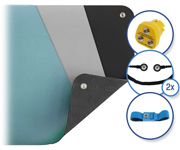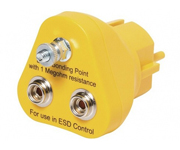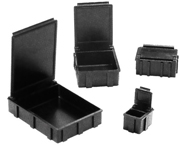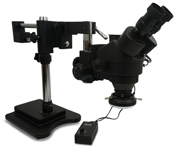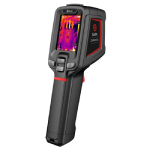By now there are several articles on our knowledge centre about soldering and techniques, but one question we often get is "What flux do I need?". The answer to this question is not clear and can be answered in several ways. This article discusses the application of flux and what types are available. It also discusses the 'No-Clean' type of flux and what makes it special.
What does flux need to be used for?
Flux has multiple applications, there are two reasons to apply it. The most important reason for the home user is that it ensures that tin flows better and sits nicer on the contact points. The other reason, which is partly responsible for the aforementioned reason, is that it prevents and eliminates oxidation. It cleans the contact surface by the properties of the fabric and the heating.
  |
Examples of how flux helps with soldering.
Flux is used in the core of most soldering tin. The tin is therefore already mixed with flux in advance to facilitate soldering. However, with SMD soldering it is usually the case that the available flux is no longer sufficient. For this reason, it is often advisable to add flux in advance.
Operation
Flux has a deoxidizing effect. It ensures that the oxidation residues present on the contact surfaces of components and PCBs are cleaned. As a result, the soldering tin adheres much better and can conduct electrically as well as mechanically more power to it. These are two reasons why to use sufficient flux for the soldering work.
Types flux
Most of the flux used in soldering is of organic origin, this flux often has 4 components. Activators, catalysts, solvents and additives.
Activators
These substances dissolve the effect of oxidation on the metal surface. Their purpose is to generate an unoxidized, easily soldered surface. These substances are often dependent on higher temperatures and do not yet work at room temperature.
Activators work by converting the metal oxides on the contacts into salt and water, these residues often dissolve quite easily in the other substances such as the catalysts. The activators' action often improves at higher temperatures up to a maximum level where they decompose.
Catalysts
These chemicals are generally very resistant to high temperatures and often non-flammable. The purpose of these chemicals is to form a barrier against oxygen in order to counteract the accelerated oxidation at high temperature.
Solvents
These substances ensure a better distribution of the active substances over the solder surface. The solvents often evaporate la in the pre-heat phase.
Additives
The additives ensure in their own way that the properties of the flux are adjusted. For example, they can reduce surface tension, prevent corrosion, act as a thickening agent and other properties.
Specifications
Flux is specified in Europe with the ISO 9454-1 standard. In this standard, a code with 4 characters is used to define the specifications or structure. The table below shows how to read the structure.
| Flux type | Basis | Activator | Form |
|---|---|---|---|
| 1. Resin | 1. Resin 2. Without resin | 1. without activator 2. Halide activator 3. Non-Halide activator | A. Liquid B. Solid C. Pasta |
| 2. Organic | 1. Water soluble 2. Not water soluble | ||
| 3. Inorganic | 1. Salts | 1. Ammonium chloride 2. Without Ammonium chloride | |
| 2. Acids | 1. Phosphoric acid 2. Other acids | ||
| 3. Alkaline | 1. Amines and or ammonia |
Our fluxes almost all comply with this specification and can be traced back this way. An example is the 50 ml variant that we sell. This one is of type 1.1.3A. If we look in the table we can find that it is a "Resin solder with Non-Halide activator, liquid" flux.
Most of the flux we sell is of this type, as it is generally the most commonly used type. There are several reasons for this. Liquid flux is often the easiest to apply, and the type is quite harmless and can often remain on the PCB. This makes it good to use for SMD soldering.
No-Clean
No-clean fluxes are a special type, they are designed in such a way that the remains can remain on the PCB because they are harmless in most situations. For almost all applications these can be left behind after soldering. The main reason to remove it is that it doesn't look as nice as a clean PCB. No-clean flux can often only be cleaned with IPA and not water-soluble.










